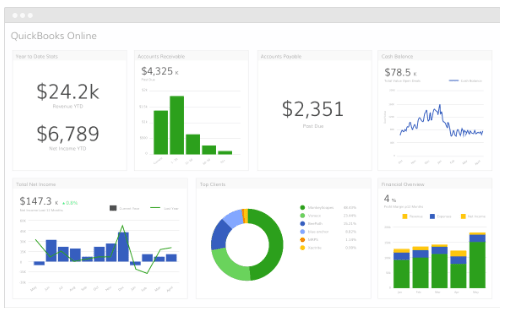To determine the fixed cost per unit, divide the total fixed cost by the number of units for sale. When it comes to fixed and variable costs, a clear understanding of each is essential for identifying the correct price level for goods and services. Understanding how costs can change with fluctuations in volume and output levels can help refine your overall business strategy. Knowing the difference between expenses and revenue is the key to understanding the profitability of your business. Understanding different types of costs are essential for businesses to develop a strategy of providing quality products and making a profit. In conclusion, advertising expenses are typically considered variable costs in business.
- Advertising can target customers with information about specific products, services and promotions, or it can simply give the company general exposure in the marketplace.
- If last year’s sales revenues totaled $950,000 and you allocate 8 percent, your marketing budget for the coming year is a fixed expense totaling $76,000.
- Making informed decisions about business expenses can help drive profitability.
- They are to be paid irrespective of the operational status of a company.
- Many business owners make the error of assuming that marketing and advertising are interchangeable.
Regardless of how much your business expands, you have control over how much advertising you do, so you can choose your ads wisely. While promoted trends provide huge exposure and awareness in a short https://accounting-services.net/ amount of time, the price is costly, but can be worth it as it guarantees placement in the Trends section for an entire day. Facebook allows for a daily budget or a lifetime budget for advertising.
Assuming you are a business owner or manager, you may have wondered whether advertising is a fixed cost in your budget. This is an important question to consider as you evaluate the financial impact of your marketing efforts. In this section, I will analyze the nature of advertising expenses and discuss whether they can be classified as fixed costs. Advertising represents a discretionary fixed cost, meaning the level of spending is up to company management and the spending level can change from one budget period to the next. There’s an ongoing process of evaluating how well advertising spending is working, and how advertising is affecting sales. Advertising can target customers with information about specific products, services and promotions, or it can simply give the company general exposure in the marketplace.
However, the variable cost may be higher, as the cost of online advertising will depend on the level of competition and the cost of bidding for keywords. Although advertising and advertising cost fixed or variable marketing work together, they aren’t identical. As intimidating as this SG&A abbreviation looks, it’s quite a simple one that stands for sales, general and administrative.
Analysis of Advertising as a Fixed Cost
Measuring the raw efficiency of marketing can happen in a number of ways. For example, 1,000 impressions from your target audience is much more valuable than 1,000 impressions from random people who may not be interested in your product, service, or idea. The variable costs are usually calculated in a linear manner, which is why they often tend to miss out on various essential factors within the organisation.
How do you calculate fixed costs from variable costs and sales?
In other words, they follow the rules of accrual accounting practice by recognizing the cost (expense) in the period in which they occur regardless of when the cash changes hands. Each month, Bert will recognize 1/12 of this insurance cost as an expense in the period in which it is incurred (Figure 2.24). Tony operates a screen-printing company, specializing in custom T-shirts. Regardless of whether he produces and sells any T-shirts, he is obligated under his lease to pay $1,000 per month. However, he can consider this fixed cost on a per-unit basis, as shown in Figure 2.15. Variable costs can be challenging to manage as they can vary from month to month, increase or decrease quickly, and have a more direct impact on profit than fixed costs.
The National Federation of Independent Business recommends allocating 2 to 5 percent to advertising. If you allocate 5 percent, your initial advertising budget allocation is $3,800. Because you can adjust allocations within your marketing budget – as long as you don’t exceed the $76,000 limit – advertising is a variable expense. Instagram Ads are managed via Facebook’s ad platform and offer an impressive way to reach your target audience. The average CPC for Instagram ads is $3.96 and the average CPM is $8.96. That being said, Facebook ads typically perform better for campaigns focused on traffic and clicks, while Instagram typically performs better for campaigns focused on impressions and reach.
The graph shows that mixed costs are typically both fixed and linear in nature. In other words, they will often have an initial cost, in Ocean Breeze’s case, the $2,000 fixed component of the occupancy tax, and a variable component, the $5 per night occupancy tax. Note that the Ocean Breeze mixed cost graph starts at an initial $2,000 for the fixed component and then increases by $5 for each night their rooms are occupied. The Ocean Breeze is located in a resort area where the county assesses an occupancy tax that has both a fixed and a variable component.
But if they produce 200 cupcakes, their variable cost for ingredients would be $400, as they would need to purchase more ingredients. Whether it’s the office Christmas party or a week in Acapulco with your top clients, any event you have to plan will come with fixed and variable costs. This decision should be made with volume capacity and volatility in mind as trade-offs occur at different levels of production. High volumes with low volatility favor machine investment, while low volumes and high volatility favor the use of variable labor costs.
networking company in Dubai:
Variable cost is the product of the total number of units produced or the total output quantity and the per-unit variable cost. While in the example Carolina Yachts is dependent upon direct labor, the production process for companies in many industries is moving from human labor to a more automated production process. For these companies, direct labor in these industries is becoming less significant.
FAQs on Difference Between Fixed Cost and Variable Cost
As a business owner, understanding fixed and variable expenses as part of your overall business expenses is crucial for developing your long-term financial plans. A firm’s total cost is the sum of its production and non-production costs. Total costs are calculated by summating fixed costs like rent and salaries to variable costs like raw materials and hourly laborers. Taken together, fixed and variable costs are the total cost of keeping your business running and making sales.
While advertising possesses a two-fold effect in increasing current-year sales and builds up future goodwill. The return of investment approach primarily emphasizes the relationship between advertisement and sales. Measuring the preceding year’s sales revenue with advertising and without advertising determines a rate-of-return providing a basis for an advertising budget. The U.S. Small Business Administration notes that many businesses set their marketing budget as a percent of revenue.
They change as the volume of goods or services produced increases or decreases. Many business owners commonly adjust subsets as a way to meet changing business needs and remain within an annual budget allocation. Advertising is a component in your marketing budget, and you can classify those expenses as variable. Advertising expenses on an income statement are generally found grouped into SG&A expense (sales, general and administrative).
It allows you to allocate resources effectively and generate the highest possible return on investment. When it comes to traditional advertising platforms, such as print, TV, radio, and direct mail, there is a certain level of stability in the cost structure. However, the costs vary significantly based on placement, size, frequency, and timing.
Further, when additional machinery or equipment is placed into service, businesses will see their fixed costs stepped up. Fixed costs are expenses that remain the same regardless of the level of production, while variable costs change based on the production output. Rent, advertising, and administrative costs are examples of fixed costs, while examples of variable costs include raw materials, sales commissions, and packaging. If, at any point, the average variable cost per boat rises to the point that the price no longer covers the AVC, Carolina Yachts may consider halting production until the variable costs fall again. As total fixed costs are those which are spent in fixed quantity over a particular period, average fixed costs are the total fixed cost per unit of output produced. For example, if the output increases, the average fixed cost will decrease as now less fixed expense is divided because of the new unit sold.




